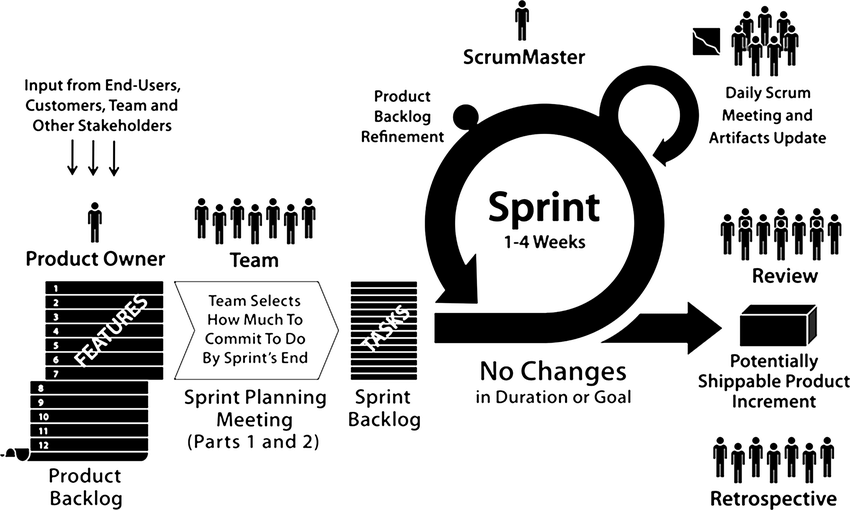Table of contents
Overview
Scrum is the most popular delivery framework for agile by far its often confused with agile itself. Scrum is a powerful, lightweight product delivery framework developed to rapidly deliver value while accommodating the changes that are inevitable in product delivery. It’s also meant to create a predictable pace for the team.
Scrum organizes projects using cross-functional scrum teams, each one of which has all of the capabilities necessary to deliver a piece of functionality from idea to delivery. Scrum works because it is product-focused, collaborative, and iterative.
The scrum framework guides the creation of a product, focusing on value and high visibility of progress. Working from a dynamic list of the most valuable things to do, a scrum team brings that product from an idea to life using the scrum framework as a way to encourage transparency, inspection, and adaptation. The goal of Scrum is to help teams work together to delight customers.

Traditionally, a product is designed, then developed, then demonstrated or released to the customer. This occurs mostly as a sequence and over long stretches of time. Often, the customer is unhappy with the result and wants changes. Since we are so late in development, changes found after release are typically very costly. Scrum, however, incorporates frequent demos and feedback to mitigate surprise requirement changes. All the project work gets cut into short development iterations known as sprints. Scrum emphasizes that work planned in sprints must be small, well understood, and prioritized. Each sprint is typically 1–4 weeks long (and stays consistent for a given team). During a sprint, the delivery team chooses the high-value work it can complete; the team focuses on just that work for the sprint’s duration. At the end of each sprint, the team demonstrates the working software it produced. During the demo, the team gathers feedback that helps shape the direction of the product going forward. Practically, this means that design decisions are not made way ahead of time, but rather right before or even during active development. Instead of having heavy, top-down design, design emerges and evolves over several iterations: develop, demo, gather feedback, incorporate feedback, develop, demo…
Scrum Values
- Commitment: The Team given Authority and Autonomy to decide; The Product Owners commits to Product Backlog; The Scrum Master commits not to introduce new work items till Iteration is complete
- Focus: The Scrum Master ensures the Team is not distracted; commits Resources and removes Roadblocks if any
- Openness: Product Backlogs and Daily Progress of Work Items are Visible to the entire Team
- Respect: Diversity of Individual Strengths and Weaknesses; facilitate Self-directed Teams; Teams empowered to seek/hire resources
- Courage: The Team has the courage to take Decisionsadaptively; Management is supportive by empowering Teams